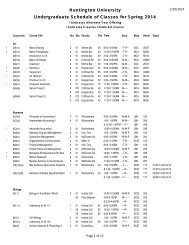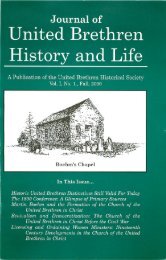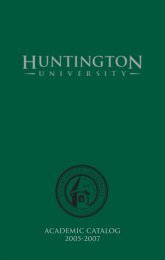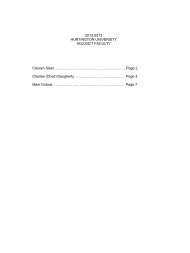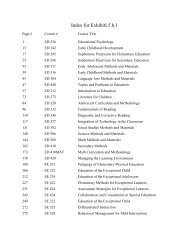Gillian Clark, Christianity and Roman Society - Huntington University
Gillian Clark, Christianity and Roman Society - Huntington University
Gillian Clark, Christianity and Roman Society - Huntington University
You also want an ePaper? Increase the reach of your titles
YUMPU automatically turns print PDFs into web optimized ePapers that Google loves.
BOOK REVIEWS 111<br />
by the various electors. The fact that the region did not become staunchly Lutheran,<br />
Reformed, or Catholic is crucial for fully underst<strong>and</strong>ing the more ecumenical theology of<br />
the catechism. In its early modern history the Palatinate was never dogmatically <strong>Roman</strong><br />
Catholic, but on the other h<strong>and</strong>, neither was it consistently Lutheran as understood by<br />
Martin Luther, but rather manifested traits of the Melancthonian strain of Lutheranism.<br />
Finally, the region also was influenced by the newly rising Reformed theology. All of<br />
these trends are captured well in this chapter <strong>and</strong> especially in Gunnoe’s discussions of<br />
the various theological controversies, for example, the Heidelberg Lord’s Supper<br />
Disputation of 1560 <strong>and</strong> the Naumburg Prince’s Conference of 1561 (40-4). Part of the<br />
issue running through much of the period was that of how to underst<strong>and</strong> the Augsburg<br />
Confession, <strong>and</strong> this too is important for grasping the emergence of the Heidelberg<br />
Catechism.<br />
Lyle Bierma writes chapter two, which deals with the purpose <strong>and</strong> authorship of the<br />
Heidelberg Catechism. Here of course the focus of the book is narrowed. Bierma spends<br />
a good deal of time addressing the frequently debated issue of who wrote the catechism,<br />
<strong>and</strong> his answers are the product of an obviously careful study of both the historiography<br />
of the problem <strong>and</strong> the sources themselves. His conclusion is that “it seems clear that the<br />
HC was in some sense, a team project involving the leading theologians <strong>and</strong> church<br />
officials of the Palatinate <strong>and</strong>, in no small way, Elector Frederick III himself” (74). But<br />
the primary author is believed by Bierma to be Ursinus.<br />
Bierma also writes chapter three, entitled “The Sources <strong>and</strong> Theological Orientation<br />
of the Heidelberg Catechism.” This chapter was fascinating from the historian’s<br />
viewpoint, in that it dealt with the prickly problem of sources drawn upon <strong>and</strong><br />
influencing the content of a given document. Here again, Bierma is a careful researcher<br />
who underst<strong>and</strong>s the historiographical issues. In the end, the Heidelberg Catechism is a<br />
product of several theological traditions, designed to promote consensus in the Palatinate,<br />
among Melancthonians, Calvinists, Zwinglians <strong>and</strong> “Old Lutherans” (102).<br />
The last two chapters are a useful introduction to <strong>and</strong> list of the early editions of the<br />
catechism (chapter four) <strong>and</strong> a bibliography of research on the Catechism since 1900<br />
(chapter five). The latter includes works in German <strong>and</strong> English. Part two contains<br />
translations by Lyle Bierma of the Smaller <strong>and</strong> Larger Catechisms. The Smaller<br />
Catechism is the primary textual foundation for the Heidelberg Catechism itself (139).<br />
Neither one of these foundational documents has previously been translated into English.<br />
This book is very valuable for at least one huge reason: that is, it helps put to rest the<br />
notion that confessional statements like the Heidelberg Catechism were written as<br />
dogmatic expositions of one narrowly defined theological orientation. The Heidelberg<br />
Catechism, though certainly in the Protestant tradition, more Reformed, <strong>and</strong> opposed to<br />
<strong>Roman</strong> Catholicism, is nevertheless something of an ecumenical statement when<br />
understood in its historical context <strong>and</strong> not in its more narrowly defined <strong>and</strong> interpreted<br />
modern context alone. For the professional historian this book provides a gold mine of<br />
useful <strong>and</strong> well-documented information on the Reformation <strong>and</strong> on the Palatinate region<br />
of Europe during the Reformation (or barely post-Reformation) period. The authors are to<br />
be highly commended for their careful work. English speakers will find it of primary



